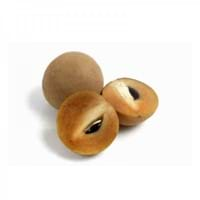Health Benefits
Anti-inflammatory properties, Arthritis treatment, Regulates Blood Sugar, Unknown
Cancer prevention, Supports healthy Liver function, Diarrhea treatment, Heart care, Increases metabolic rate, Neutralizes irritable bowel syndrome, Helps Prevent cataract, Prevents constipation, Prevents gall stones, Prevents high blood pressure, Helps prevent Parkinson's disease, Reduces risk of asthma, Treatment of alzheimer's disease
General Benefits
Boosts immune system, Controls blood sugar levels, Digestive aid
Boosts immune system, Helps in weight loss, Maintains healthy cholesterol level, Whitens teeth
Skin Benefits
Nourishes skin, Protects skin from oxidative stress
Anti-aging benefits, Brightens and lightens complexion, Hydrates skin, Treatment of acne, Treatment of dark spots, Treatment of puffy eyes
Hair Benefits
Prevents hair loss, Promotes longer and healthier hair, Regulates hair growth
Prevents hair loss, Promotes longer and healthier hair, Regulates hair growth, Treatment of dandruff
Allergy Symptoms
Asthma, Red rash, Swelling of mouth, tongue or lips
Abdominal pains, Itching, Swelling of mouth, tongue or lips, Vomiting
Side Effects
Diarrhoea, Vomiting
Allergic reaction, May consist of poisonous seeds
Best Time to Eat
As a snack in the late afternoon
Any time except an hour after meal, Best if taken as a breakfast (or empty stomach), Don't consume at night and before bed
Vitamin B5 (Pantothenic Acid)
Vitamin C (Ascorbic Acid)
Vitamin E (Tocopherole)
Not Available
Vitamin K (Phyllochinone)
Not Available
Lutein+Zeaxanthin
Not Available
Phytosterol
Not Available
Calories in Fresh Fruit with Peel
Calories in Fresh Fruit without Peel
Not Available
Calories in Juice
Not Available
Calories in Jam
Not Available
Calories in Pie
Not Available
Season
Winter
All seasons
Varieties
Bush Table Queen, Heirloom Table Queen, Festival Hybrid, Early Acorn Hybrid, Table Ace, Ebony and Cream of the Crop
Red Delicious, Golden Delicious, Gala, Fuji, Granny Smith, Arkansas Black, Sampion, Pink Lady, Cameo, Jonagold, Mc Intosh, Ananasrenette, Lobo, Pacific Rose, Yellow transparent and Bramley
Seedless Variety
Not Available
No
Color
Dark green, Green-yellow, Orange green
Green, Red, Yellow
Inside Color
Not Available
White
Taste
Sweetish
Sweet, Sweet-Sour
Origin
Central America, North America, Unknown
Central Asia, Middle East Asia
Soil Type
Well-drained
Loam
Climatic Conditions
Cold, Sunny
Cold
Facts about
- It was named as Acorn Squash for its resemblance to a large ribbed acorn.
- It is said that squash was being grown in Mexico as long as 10,000 years ago.
- It was the first food cultivated by native American Indians.
- Apples can be as small as a pea and as big as a pumpkin.
- There are more than 8000 varieties of apples.
- Life of an Apple tree can be more than 100 years.
- Apples contain 25% air, therefore they float in water.
Spirits
Not Available
Yes
Cocktails
Not Available
Yes
Other Countries
Egypt, India, Iran, Italy, Mexico, Russia, Turkey, Ukraine, United States of America
Chile, France, India, Iran, Italy, Poland, Russia, Turkey, United States of America
Botanical Name
Cucurbita Pepo
Malus Domestica
Synonym
Winter Squash
Malus Communis or Malus Pumila or Pyrus Malus
Subkingdom
Tracheobionta
Tracheobionta
Division
Magnoliophyta
Magnoliophyta
Class
Magnoliopsida
Magnoliopsida
Subclass
Dillenhidae
Rosidae
Order
Cucurbitales
Rosales
Family
Cucurbitaceae
Rosaceae
Species
Pepo
M. domestica
Generic Group
Not Available
Rose
Compare Sapota and Apple
It is important compare Sapota and Apple as both the fruits have a different nutritional value. Their comparison can be done on the basis of their vitamin and mineral content, calories, benefits as well as characteristics, making it easier for us to choose the best fruit for our diet. Their general health benefits are as follows:
Sapota Benefits: boosts immune system, controls blood sugar levels and digestive aid.
Apple Benefits: boosts immune system, helps in weight loss, maintains healthy cholesterol level and whitens teeth.
Fruits are also used as a remedy for various hair problems. The hair benefits of Sapota are: prevents hair loss, promotes longer and healthier hair and regulates hair growth and hair benefits of Apple are: prevents hair loss, promotes longer and healthier hair, regulates hair growth and treatment of dandruff. Some fruits are known to cause allergic reactions. The allergy symptoms of first fruit are: asthma, red rash and swelling of mouth, tongue or lips and the symptoms of second fruit are: abdominal pains, itching, swelling of mouth tongue or lips and vomiting. Get sorted Sapota vs Apple comparison with the help of fruit comparison tool by fruitvs.com.









